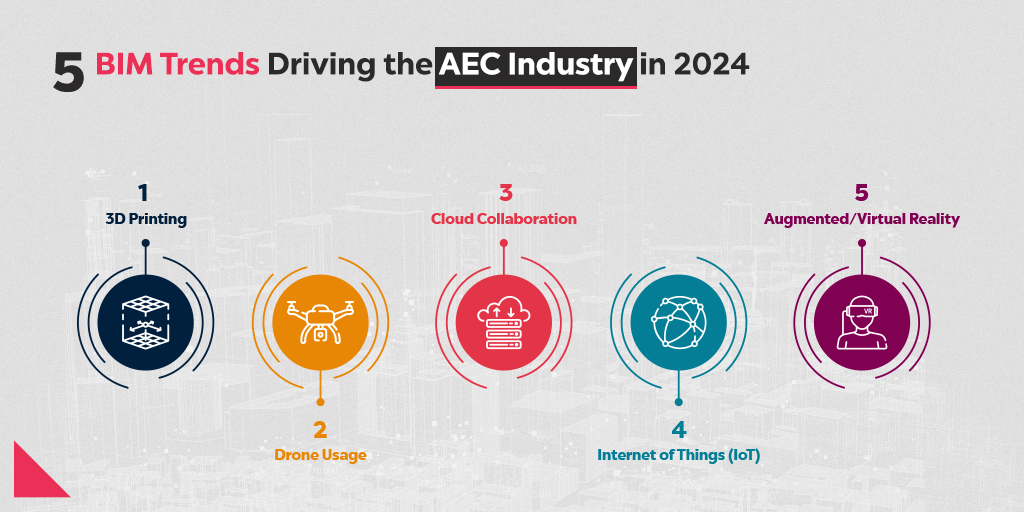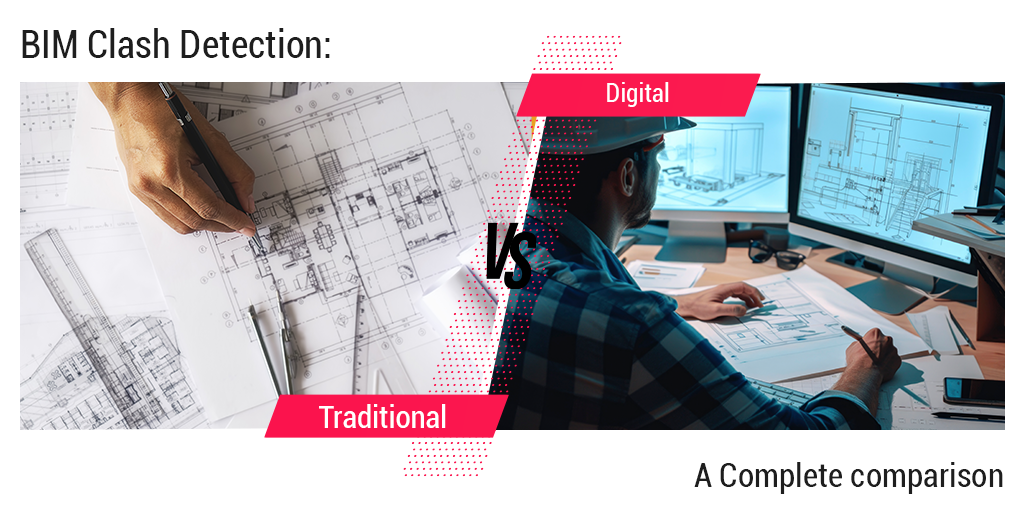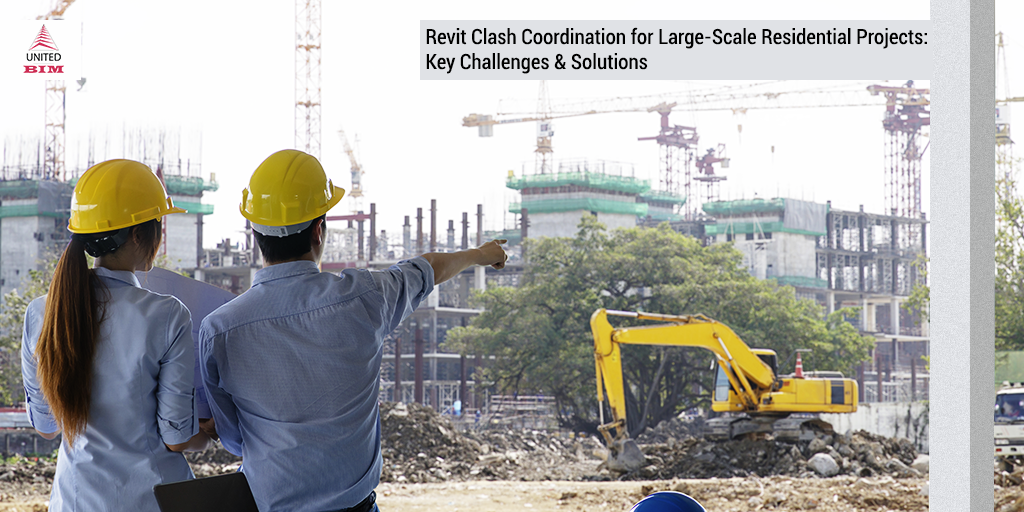Last updated on: January 10, 2025
Future of BIM Trends in AEC Industry
Building Information Modeling (BIM) has completely revolutionized the AEC industry, bringing a higher level of efficiency to the conventional design process. According to research by Dodge Data & Analytics, engaging deeply with BIM technology considerably improves the ROI of a project. Moreover, deploying collaborative solutions on BIM projects substantially pushes ROI to the higher bracket (>50%).
In retrospect, BIM has made it easier for architects, engineers, and contractors to collaborate effectively with project owners with several amazing benefits.
Benefits of BIM Collaborations for AEC Stakeholders
The same research study concludes that the majority of professionals enlist the below-mentioned benefits of BIM collaboration:
| Benefits of BIM Collaboration | Architects | Engineers | General Contractors | Trade Contractors |
|---|---|---|---|---|
| Better client understanding of proposed design | 92% | 57% | 92% | 75% |
| Improved client team design relationship | 92% | 43% | 85% | 50% |
| Improved overall design solution | 92% | 43% | 85% | 50% |
| Faster decision making | 75%% | 43% | 85% | 50% |
| Fewer design changes during the process | 58% | 43% | 54% | 75% |
Source: SmartMarket Brief- Leading the Future of Building Connecting Teams
BIM Trends in 2024 for AEC Industry
Clearly, BIM has simplified the process of building architectural design and inter-team collaboration associated with a building construction project. The BIM industry is evolving every day with new trends emerging every moment.
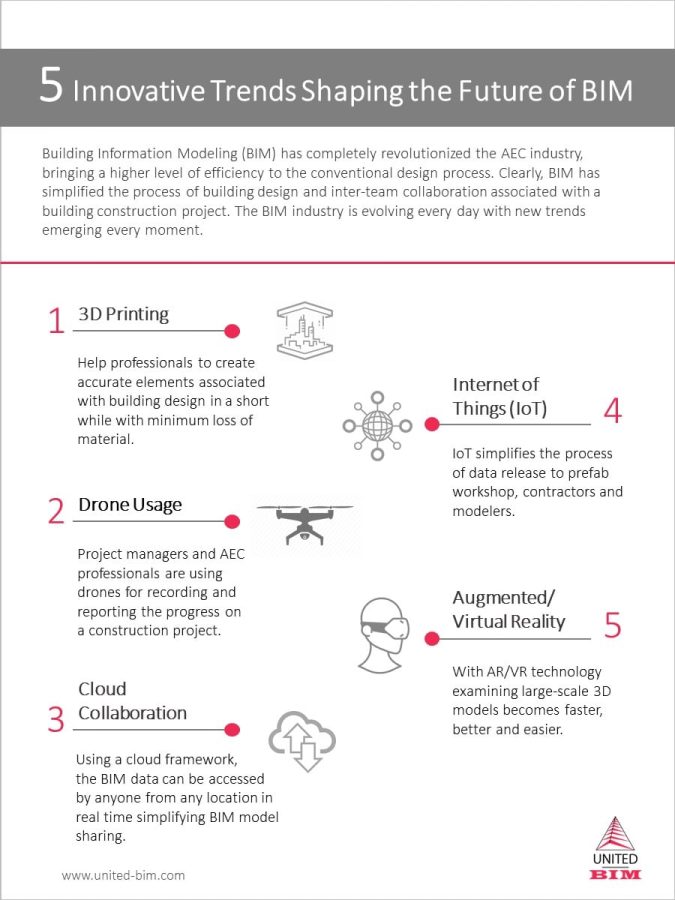
Let us understand these BIM trends briefly and how they will shape the future of BIM:
1. 3D Printing
The advancement in 3D printing technology has made it easier for professionals to create accurate elements associated with building design in a short while with minimum loss of material. When used with BIM processes, 3D printing can help in the swift development of prototypes for sharing with several stakeholders related to BIM technology in construction projects.
3D printing is a fundamental extension of the 3D modeling process in BIM. It covers the production of the 3D model from the digital file by laying down thin layers of material in consequent succession. Using BIM technology management, teams can collaborate better on digital projects by seeing an element in the physical form.
This helps them understand the dynamics, functioning, and efficiency by analyzing a structure through its look and feel, which was not possible earlier in BIM. As 3D printing technology keeps evolving, more and more AEC professionals will begin looking at the inherent benefits of using the same for better results.
Image source: HK3DPrint
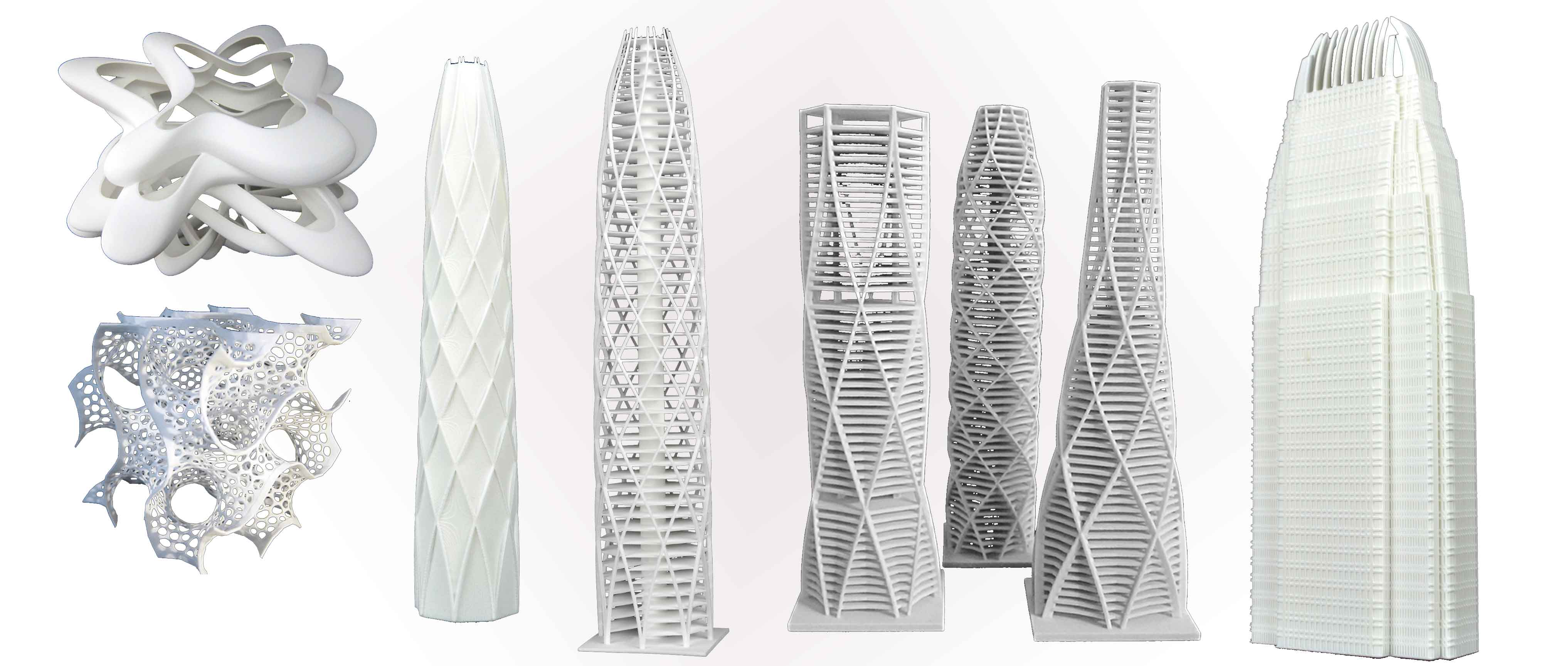
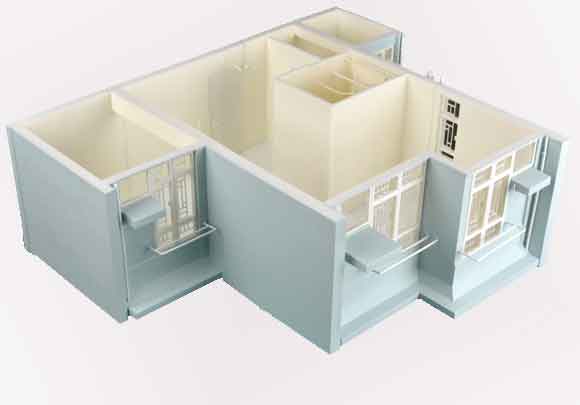
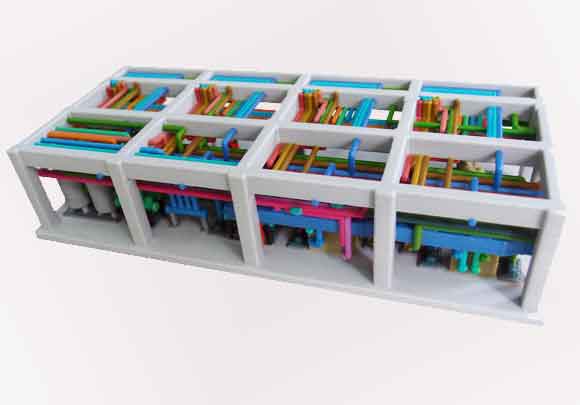
2. AR & VR- Augmented/ Virtual Reality
Augmented & virtual reality is making inroads into the BIM process and the AEC industry, at large. Perfect for presentation and evaluation purposes, these BIM technologies augment the entire modeling process. With AR/VR technology examining large-scale 3D models becomes faster, better, and easier.
AR/VR technology will be seen enhancing the BIM modeling process in the future as stakeholders will have a comprehensive and clear image of everything in front of their eyes at every step and every level of design and development.
Installers can have a clear look at the 3D models and can even offer interactive presentations to the client. AR can also be used to speed up the process of on-site clash testing and remote site management.
Image source: VRroom Buzz
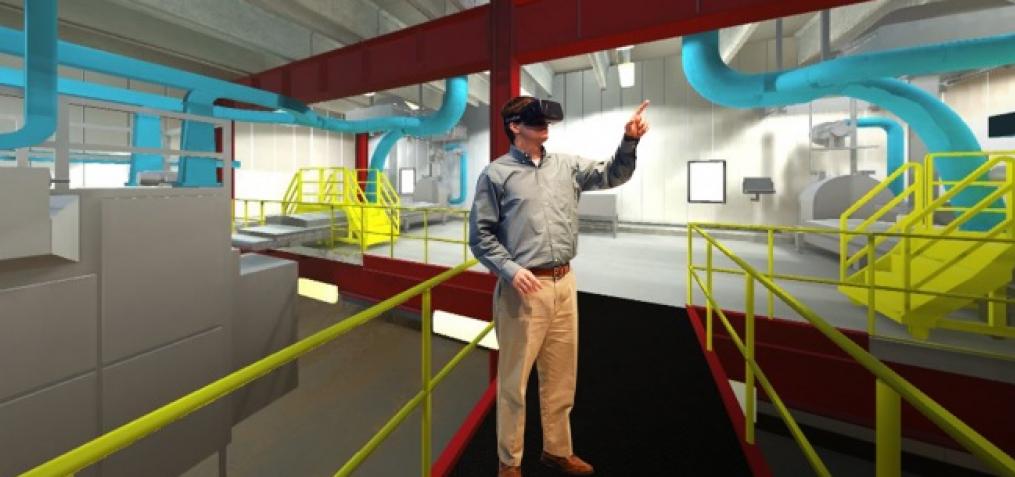
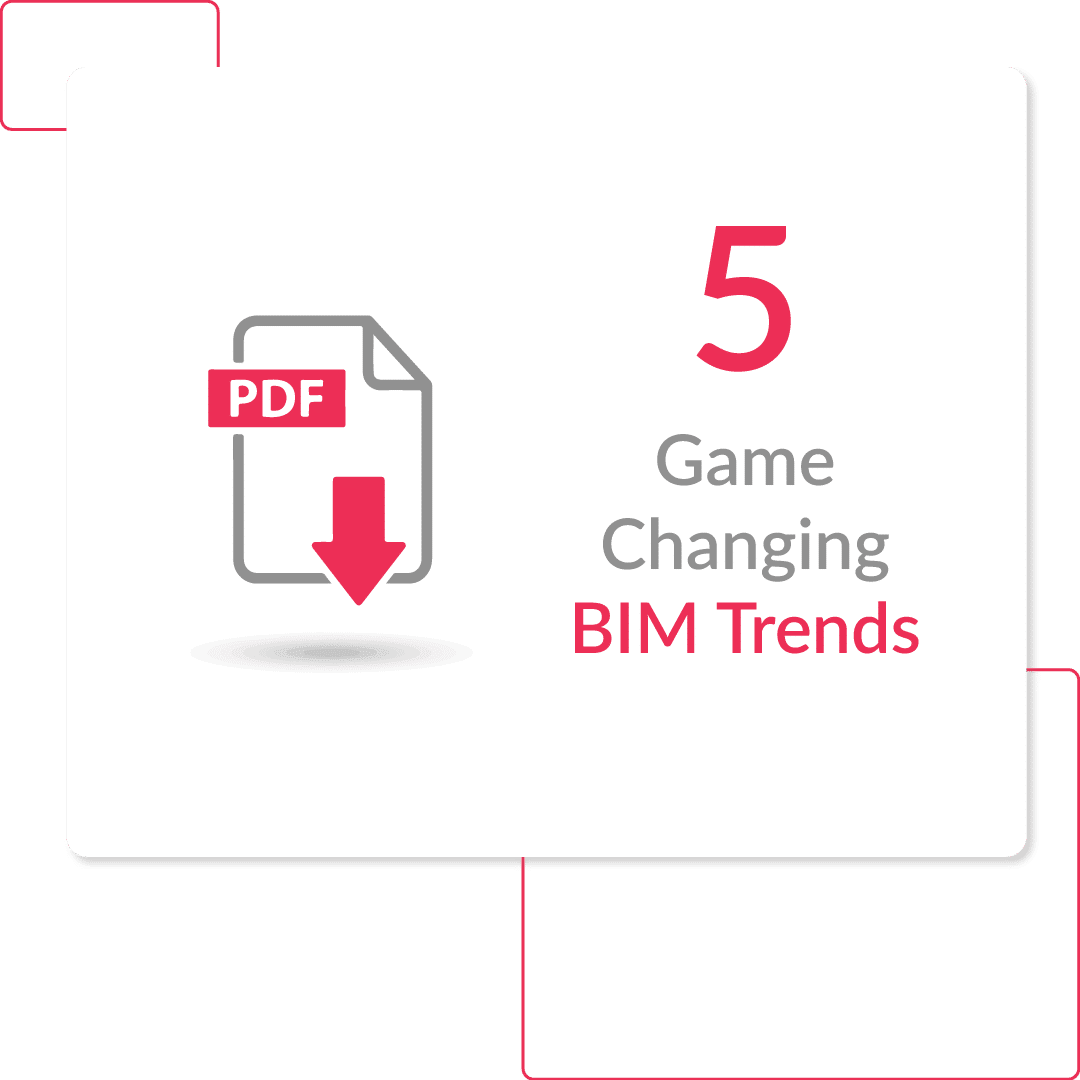
No worries. Let us send you a copy so you can read it when it’s convenient for you. Just let us know where to send it.
Expand Your Knowledge: The Process of BIM GIS Integration with Applications & Benefits
3. Use of Cloud Software
Cloud mobile applications are like a boon for the AEC and BIM segments as all the stakeholders will get hold of real-time data related to the design phase. At the same time, they can use mobile apps to collaborate with different teams working on the same project.
Using a cloud framework, the BIM data can be accessed by anyone from any location in real-time simplifying BIM model sharing. Reporting also can happen more swiftly, paving way for a more constructive and positive collaboration leading to reduced wastage of time, effort and money in project communication and collaboration.
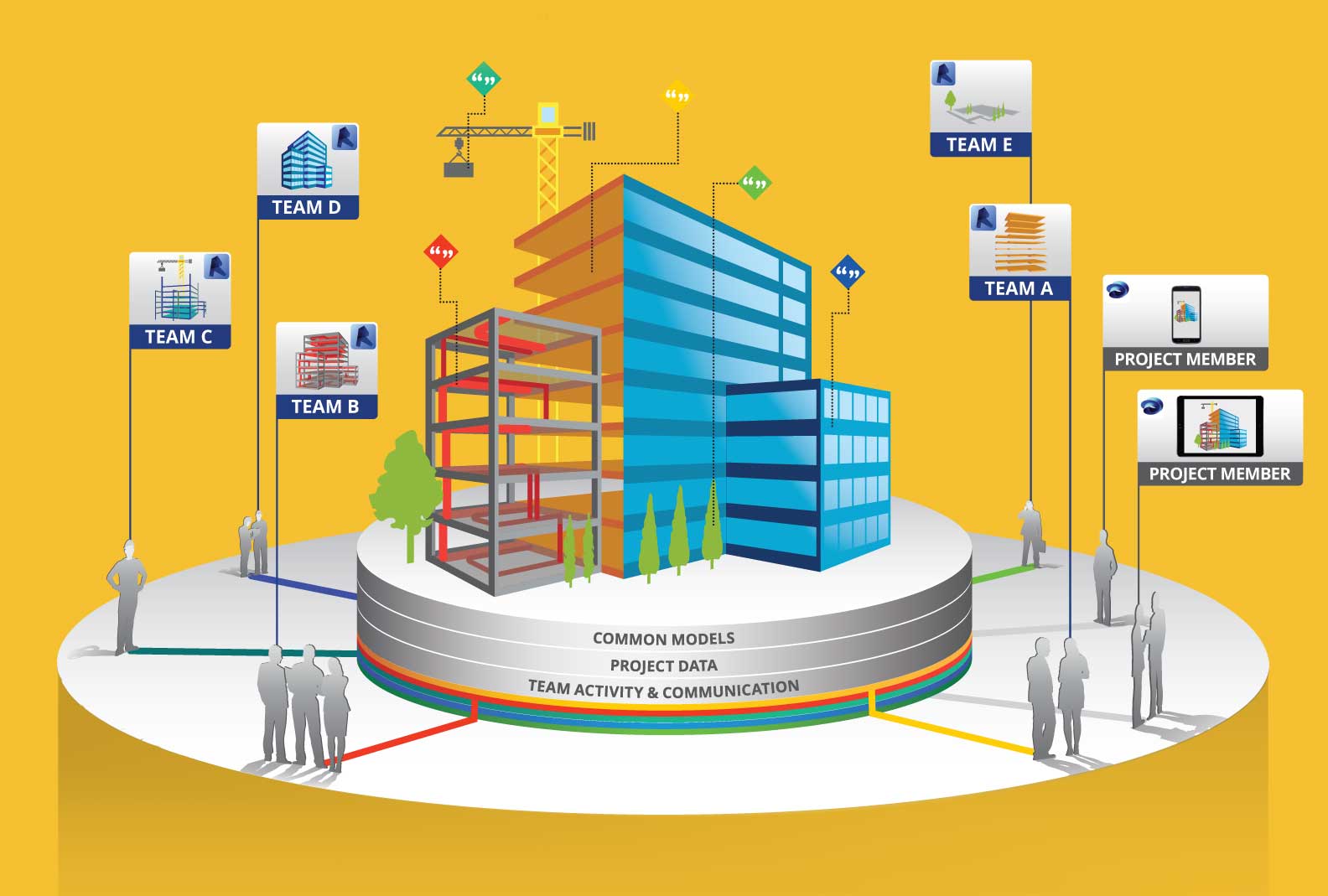
4. Internet of Things (IoT)
IoT has the potential to transform the entire BIM modeling and project installation process. IoT simplifies the process of data release to prefab workshops, contractors, and modelers. IoT devices can be used to capture real-time data and this data can be used to augment the design process. Designing can happen using a ready-to-order process based on the data captured via IoT devices which can speed up the entire design process from beginning till end.
5. Drone Usage
Project managers and AEC professionals are using drones to record and report the progress of a construction project. Drones can capture accurate project data over a large area in a short while. This data can be used by BIM specialists to refine their model and make the BIM modeling process more reliable. Also, as drones can be used for Surveying any terrain, it protect human surveyors from potential dangers on a risky site.
5
BIM TRENDS OF 2024
How BIM Technology Will Impact the Future of the AEC Industry?
Building Information Modeling is here to stay and will continue to evolve to a level where it will become an industry-accepted standard, worldwide. We are not far from a future where all project information will be interlinked and will be available on-demand in real-time, from the concept stage to the demolition of a structure.
78% of manufacturers worldwide believe that BIM is the future of project management and has influenced AEC industry phenomenally. BIM has been instrumental in helping firms achieve desired efficiencies and reduce the cost of project management over time.
Recommended Reading: Virtual Design Construction (VDC)- Benefits, Challenges, and Strategies for AEC
BIM is visualized as a common ground for different firms working on the same project. These firms use different software, tools, and techniques which BIM integrates into a single model making it easier for everyone to collaborate, communicate, understand, and work according to project requirements.
Paper-based processes and software interchangeability have resulted in losses of billions of dollars over the years. With BIM’s central data model approach, everything is streamlined across the project and different software packages. The manual re-entry option is eliminated ensuring every documentation and communication is always accurate and visible to all the parties.
As more and more countries and regions make BIM mandatory, more trends will start to emerge. All this means that the advancement in BIM technology will speed up, making the entire process even more efficient.
Wrapping Up
At United BIM, we keep an astute eye on emerging BIM trends and modern technologies for the benefit of our clients and AEC industry at large. Our experts vouch for a future where BIM will be an industry standard. Since we have been working in the segment for quite a while now, we have already earned an edge when it comes to using BIM for AEC projects. If you are interested to know more about BIM, industry trends, and discovering its potential for your next project, we will be glad to assist. Get in touch now.
The future of BIM in the AEC sector includes improved collaboration through cloud platforms, AI automation, VR/AR integration, and sustainable design. BIM will support building lifecycle management, smart buildings, and efficient infrastructure planning, enhancing construction, operation, and maintenance processes.
BIM in the AEC industry enhances design, collaboration, and coordination by creating detailed 3D models. It aids in clash detection, cost estimation, scheduling, and construction management. BIM also supports facility management, sustainability, and energy modeling, while providing accurate as-built data for future maintenance or renovations.
New BIM trends include AI and machine learning for design optimization and automation, cloud-based collaboration for global teamwork, and digital twins for real-time asset monitoring. IoT integration enhances building performance, while sustainability-focused BIM supports energy modeling and green building certifications. These trends improve efficiency and decision-making.
Technology is shaping the AEC industry through BIM, AI, cloud collaboration, and digital twins for better design, coordination, and real-time management. Robotics, 3D printing, and drones improve construction speed and precision, while IoT enhances building performance monitoring. These innovations lead to smarter, more efficient, and sustainable projects.
About the Author

Coordination Manager / VDC Manager at United BIM
With over 10 years of experience in the AEC industry, Akash Patel is a seasoned Coordination Manager and VDC Manager at United BIM. His expertise lies in managing complex MEP-FP coordination projects and leveraging cutting-edge BIM technology to ensure seamless collaboration and precision. Akash is dedicated to delivering high-quality, detailed models that meet the demands of modern construction. He is passionate about optimizing workflows and driving innovation within the BIM field.
